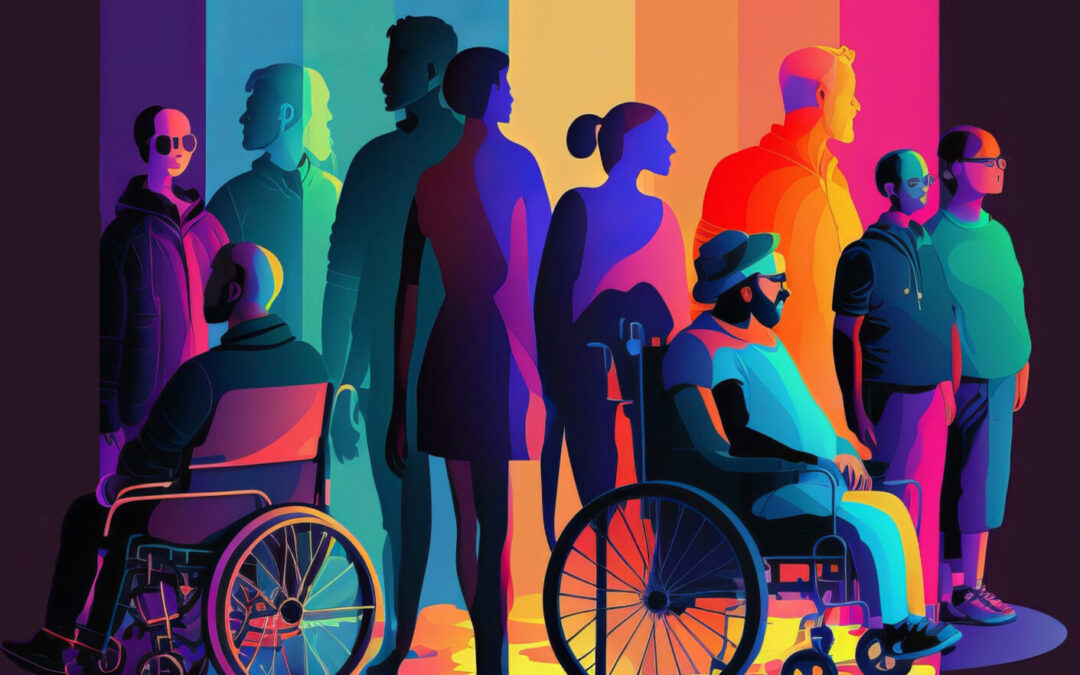I recently had coffee with a colleague who is the President of a company providing DEI training. The President was meeting with a new prospect, a Vice President, Diversity, Equity and Inclusion for a large organization. The VP DEI met my colleague and immediately asked why the president of a company providing DEI training to clients was not a person of colour?
Let’s unpack that question.
When did DEI become all about race, colour or ethnicity? I believed that DEI was borne out of a need to include people of all races, colours, ethnicities and abilities, not exclude anyone. One of the goals of DEI was to introduce different ways of thinking about our organizations to broaden and strengthen decision-making. In my opinion, it has taken on legs and evolved into a mindset that is not what it was meant to be. We should all be celebrating diversity, equity and inclusion and retaining what its true purpose is about.
It’s worth taking the time to review the current explanations of diversity, equity and inclusion:
Diversity
Diversity can be defined as the presence and acceptance of a variety of differences within a group, community, organization or society. These differences can be in terms of:
- Demographic factors: age, gender, race, ethnicity, sexual orientation, socioeconomic status and physical abilities.
- Cognitive attributes: different thinking styles, problem-solving approaches and cognitive abilities.
- Cultural aspects: variations in cultural backgrounds, traditions, values, languages and customs.
- Organizational dimensions: differences in roles, functions, and levels within an organization, as well as diversity in skills, experiences and expertise.
- Diversity of thought: the importance of a range of perspectives, ideas, and opinions to foster creativity, innovation and comprehensive decision-making.
- Background and experiences: valuing the uniqueness that individuals bring based on their life experiences, educational backgrounds and professional histories.
Diversity involves acknowledging, respecting and appreciating the richness that arises from the existence of a wide array of individual and collective differences within a given context. Promoting diversity often involves creating an inclusive environment that allows for the equitable participation and contribution of all individuals, regardless of their differences.
Equity
Equity refers to the fair and just treatment of all individuals, considering their unique needs, circumstances and characteristics. It involves creating conditions that ensure everyone has an equal opportunity to thrive and reach their full potential. Unlike equality, which implies treating everyone the same, equity recognizes that people have different starting points and may require different resources or support to achieve similar outcomes.
Key aspects of equity include:
- Fairness: Promoting fairness by addressing disparities and providing resources, opportunities and support based on individual needs.
- Inclusivity: Emphasizing inclusivity, acknowledging and valuing diversity to create environments where everyone feels a sense of belonging and can actively participate.
- Elimination of Discrimination: Identifying and addressing systemic barriers and discrimination to ensure that no individual or group is unfairly disadvantaged.
- Justice: Equity aims for social justice, striving to rectify historical and structural inequalities that may perpetuate disadvantages for certain individuals or communities.
- Outcome Parity: Ultimately, the goal of equity is to achieve parity in outcomes, where individuals have an equal chance of success and well-being regardless of their background or circumstances.
It’s important to note that achieving equity often requires intentional and targeted efforts to address systemic inequalities. This can involve policies, practices and initiatives that actively work to level the playing field and create a more just and inclusive society.
Inclusion
Inclusion refers to the intentional and active effort to create an environment where all individuals, regardless of their differences, feel valued, respected and supported. It goes beyond mere tolerance or diversity, emphasizing the full participation and contribution of every person in a group, organization or community.
Key elements of inclusion include:
- Diversity: Acknowledges and embraces diversity in all its forms, including but not limited to differences in race, ethnicity, gender, age, sexual orientation, abilities, socioeconomic status and perspectives.
- Equity: Promotes equity by ensuring that everyone has fair access to opportunities, resources and benefits. It recognizes and addresses systemic barriers that may hinder certain individuals or groups.
- Respect and Valuing Differences: Fosters a culture of respect, where individuals are valued for their unique qualities and contributions. It encourages understanding and appreciation of different perspectives and experiences.
- Participation: In an inclusive environment, individuals are actively encouraged and empowered to participate fully, contribute their ideas and engage in decision-making processes. It aims to create a sense of belonging for everyone.
- Accessibility: Involves adjusting to accommodate the diverse needs of individuals, whether those needs are related to physical abilities, communication styles or other factors. This ensures that everyone can engage fully in the community or organization.
- Cultural Competence: Inclusive environments often promote cultural competence, where individuals are equipped with the understanding and skills to interact effectively with people from diverse backgrounds.
The acronym for DEI has evolved in the last few years to DEIB – diversity, equity, inclusion and belonging. The B is a worthwhile addition as inclusion is about creating a culture that embraces diversity, promotes equity, and actively involves all individuals, fostering a sense of belonging and acceptance, ensuring that everyone can contribute and succeed. For this objective to be realized at the society level, DEIB initiatives must succeed and be top of mind in for profit and not for profit organizations, and in our communities.
I believe having diversity, equity and inclusion policies and processes are fundamental to the continued success of any organization. They are intended to ensure that people of all races, colour, sexual orientation and/or religious beliefs and people of all abilities are accepted and respected for their differences and for their significance. The principals at The Osborne Group are ready and able to work with for profit and not for profit organizations to ensure they meet the needs of all employees and continue to engage and motivate for success.
To close with the original question – DEI is not only about colour, race or ethnicities. It is about acceptance and respect for all people, and we should all choose to grasp on to this important challenge.
Anne Bloom is a consultant at The Osborne Group and can be reached here.






